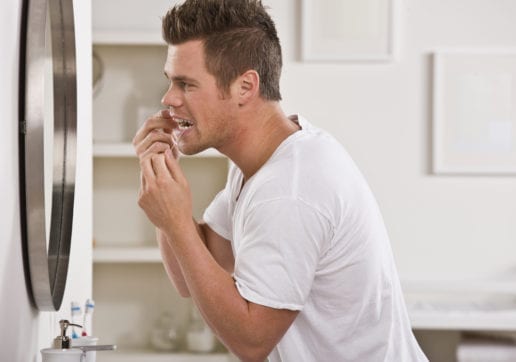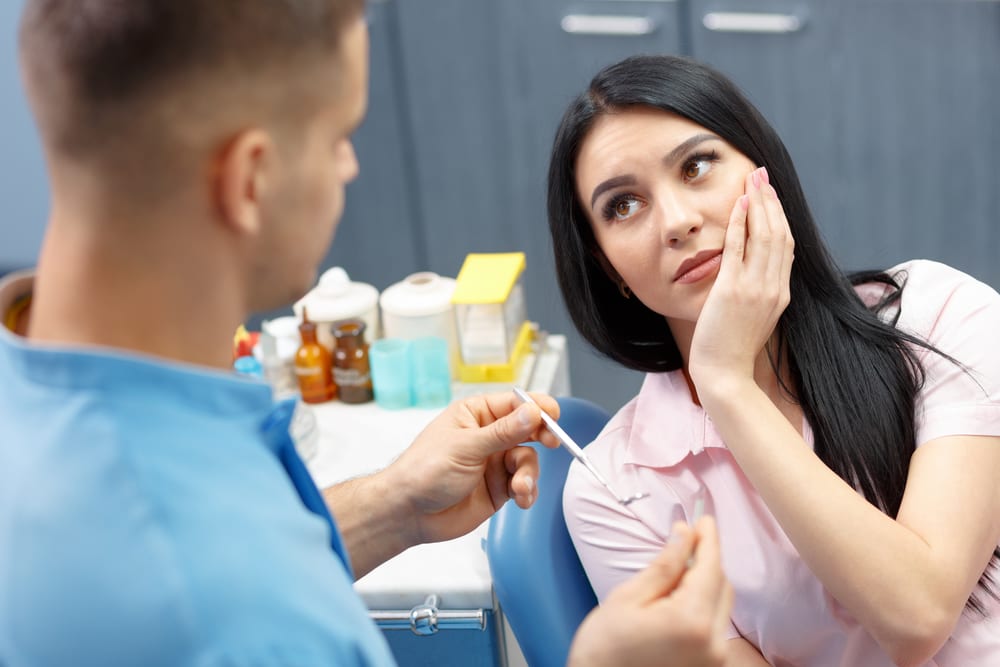If you’ve recently heard the word “gingivitis” at the dentist, this means your gums are not in an optimal state of health. This can happen if you have become lax in your oral hygiene routine. It can also be the result of a medical condition. For example, about half of all women develop gum problems during pregnancy, since changing hormone levels and blood circulation can make the gums more sensitive. Regardless of the cause, there are a few steps you can take independently to make sure your gingivitis doesn’t progress to become periodontitis (gum disease).
If you need a dentist, Clinton, NJ Drs. Carson Ferris-Zeolla and Victoria Uryniak can help. Call our office at 908-200-7007 for an appointment.
The Good News About Gingivitis
The one good thing about gingivitis is that it is reversible. You can bring your gums back into a healthy state with good care. This stands in stark contrast to a periodontitis (gum disease) diagnosis. If your gingivitis advances into gum disease it becomes an irreversible condition. Gum disease cannot be cured, and, when neglected, may lead to tooth loss. You can control the severity of your gum disease symptoms with good oral hygiene and periodontal treatments—but you cannot be cured of gum disease. A gingivitis diagnosis is a wake-up call that you are on a dangerous path toward gum disease. Step off that path now, and you can still restore your gums to good health!
How to Reverse Gingivitis
If your dentist has told you that you have gingivitis, this means you may need to do more than what you have been doing every day.
- Brush the teeth twice a day. Use a fluoride-based toothbrush, and brush for at least two minutes each time. It’s best to use a variety of brush strokes and make sure you reach every surface of the teeth.
- Replace your toothbrush when the bristles become frayed. It’s recommended that you get a new toothbrush every 2-3 months, but you may need to do this more frequently if you notice the bristles becoming frayed or bent.
- Floss the teeth every day. If your gums bleed, do not give them “time off” to recover. Keep flossing every day and they will get stronger and healthier in time. Removing bacteria from between the teeth and gums is more important than keeping your gums “happy” at this point.
- Use an antiseptic rinse to remove mouth bacteria. An oral rinse or mouthwash with fluoride will help protect your teeth from bacteria, but you’ll need one with antiseptic properties to control bacteria at the gum line. Listerine is the most popular brand of antiseptic mouthwash, but many different brands can accomplish the same goals without using alcohol. Look for a mouthwash with chlorhexidine if you can’t stand the burning feeling of a rinse that contains alcohol. Be sure to swish vigorously, to reach the spaces in the mouth you may not have been able to reach with brushing and flossing alone.
- Invest in a water flosser, maybe. This is not necessary to get your gums back into a state of good health, but a water flosser (oral irrigator) is an effective and popular way to make sure you are removing plaque and bacteria from the gum line. If you purchase this tool, use it every day!
- If you smoke, quit. Smoking can irritate the oral tissues and reduce blood circulation in the gums.
- Eat a nutrient-rich, balanced diet. Studies have shown that eating nutrient-rich fruits and vegetables can boost your immune system and help you fight off oral infection.
- Get a dental cleaning every six months. Routine preventive cleanings remove the tartar that feeds mouth bacteria.
- Keep well hydrated. Your body cannot make adequate saliva to neutralize mouth bacteria if you are dehydrated. Drink copious amounts of water or mouth-healthy green tea to stay hydrated.
If you have already been following these steps, talk to your dentist or hygienist about your habits and technique. You may be missing a critical detail, or you may need more advanced interventions.
What Causes Gingivitis and Periodontitis (Gum Disease)?
Gum disease is caused by mouth bacteria. We all have bacteria that live in our mouths, and no amount of brushing, flossing, or Listerine can ever remove all the bacteria. Gum disease is diagnosed when bacteria colonize the gum tissue and live in the periodontal pockets between the teeth and gums. If these bacteria are not removed by good hygiene, medication, and/or periodontal treatments, they can cause tissue damage to the gums and threaten the health of your teeth. When bacteria feast on food residue they excrete acids that can demineralize teeth and kill healthy gum tissue. As the situation worsens, the periodontal pockets grow larger and greater amounts of bacteria invade them. Patients with periodontitis often experience gum recession as their gingival tissue is destroyed by bacteria. They may also experience swollen, bleeding, or sore gums; bad breath; or a feeling of looseness in the teeth as more gum tissue dies.
Do you have gingivitis or gum disease? When you need a dentist, Clinton, NJ Drs. Carson Ferris-Zeolla and Victoria Uryniak are here for you. Call our office at 908-200-7007 for an appointment.







